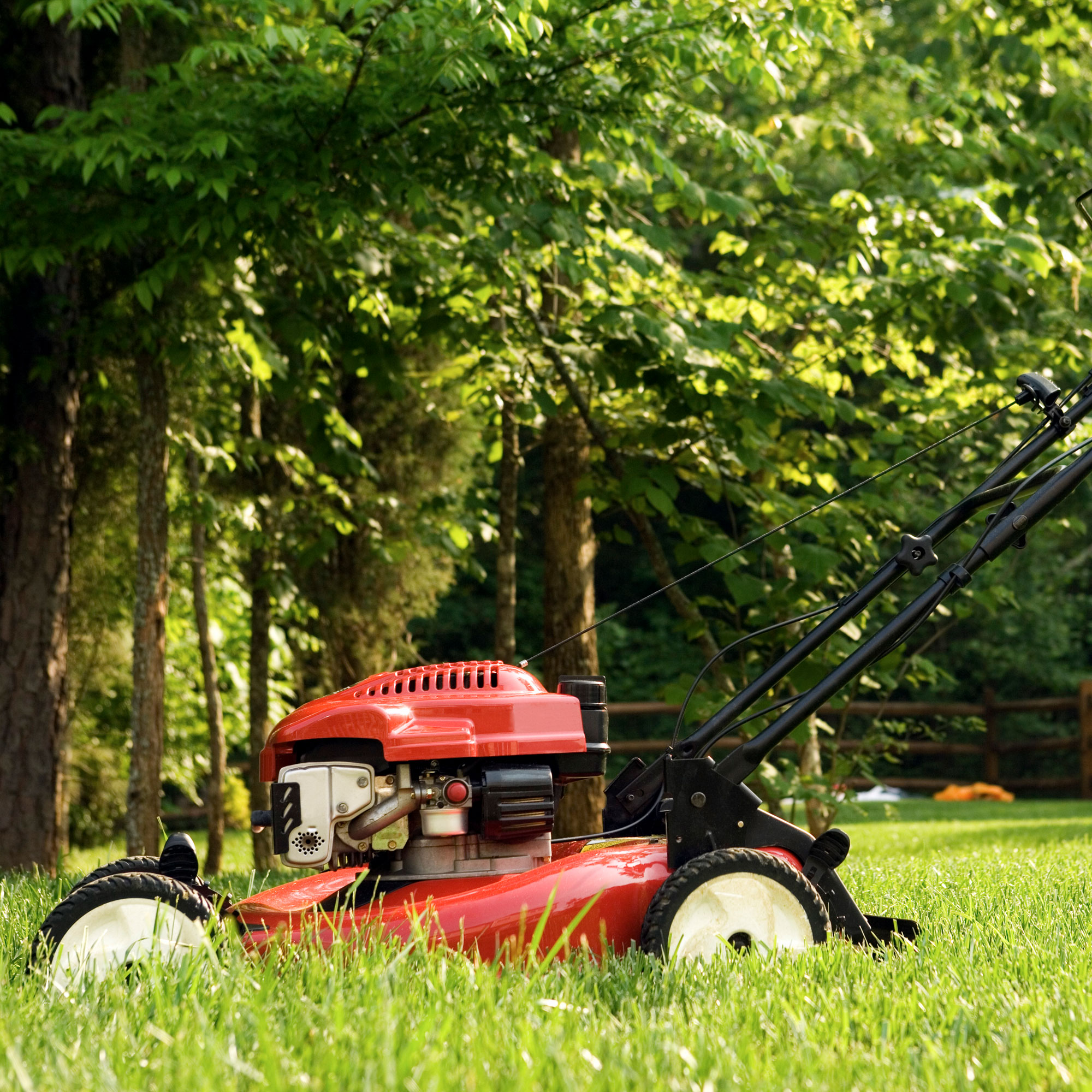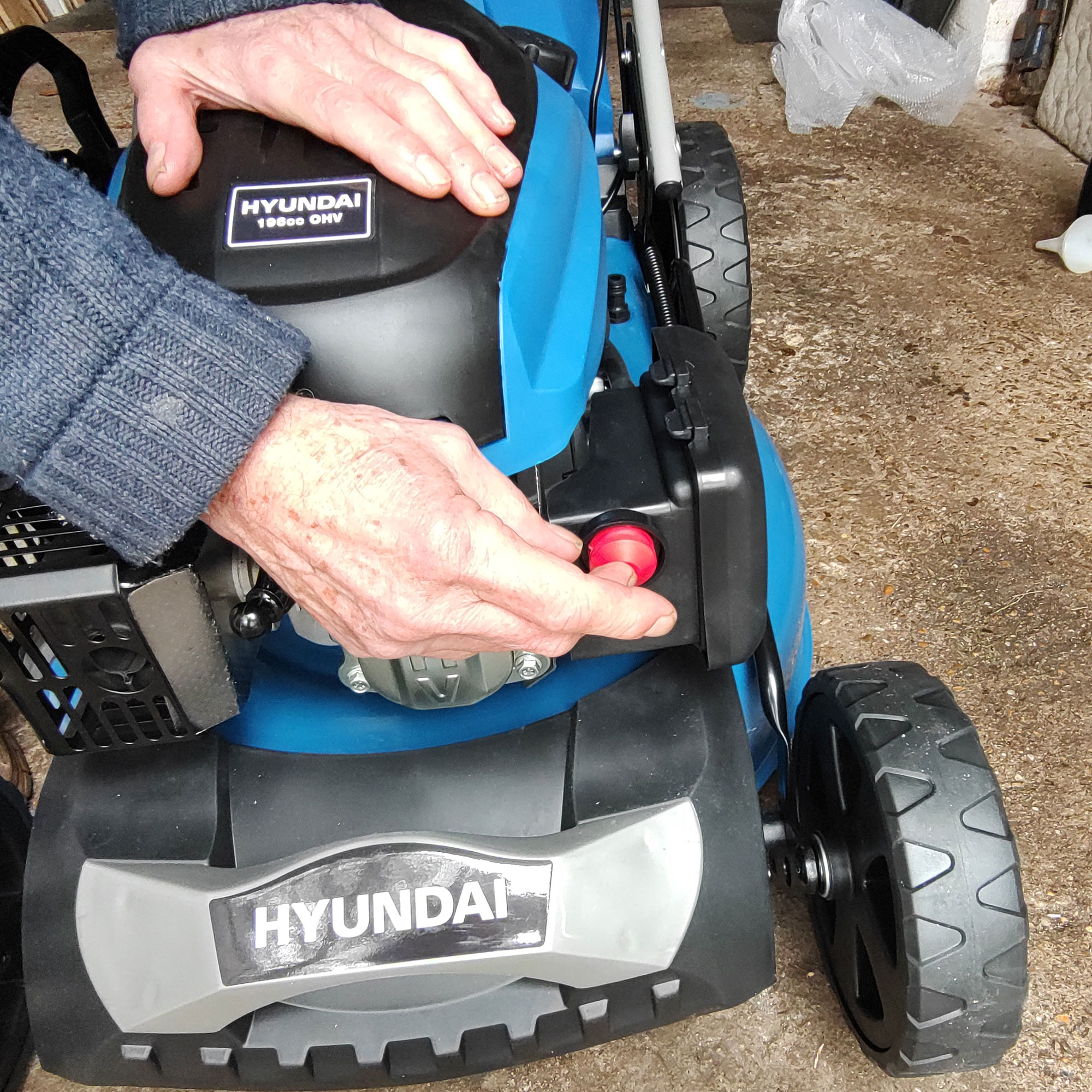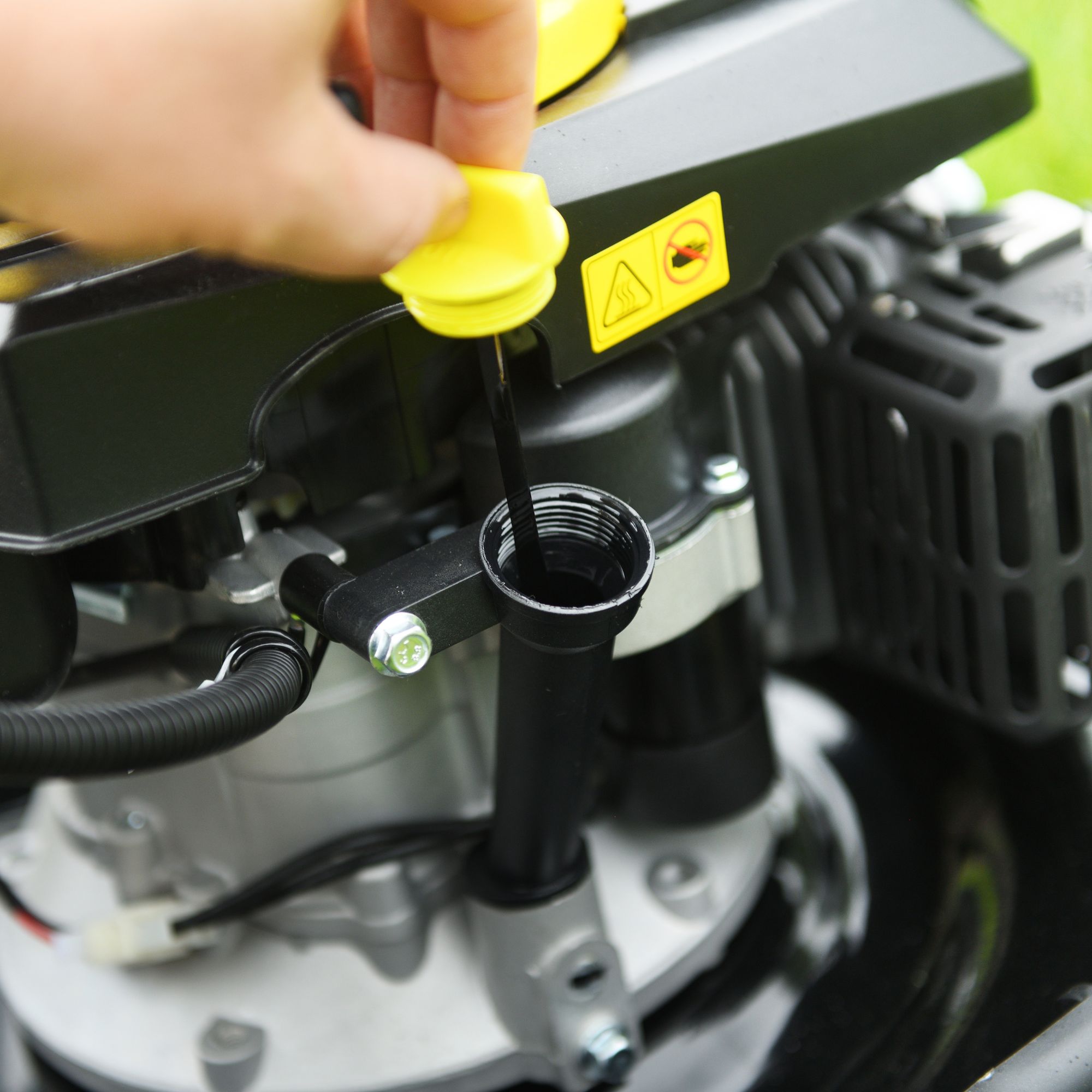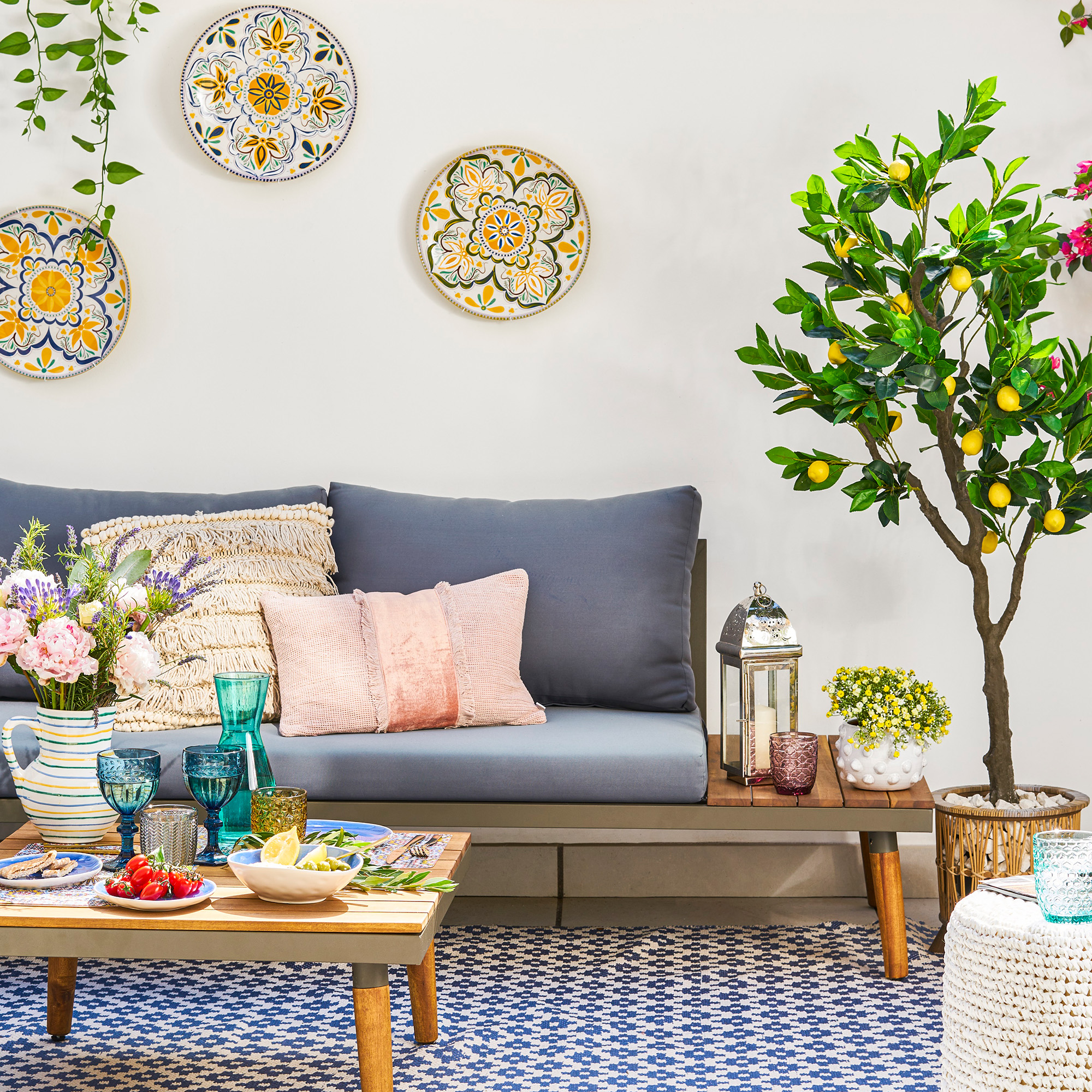How to change lawn mower oil - and why now is your last chance to do it, according to experts
When was the last time you changed your lawn mower oil?


Using a lawn mower is easy, right? You just push it back and forth, change the cutting height to adapt to the season and grass growth, and then pop it back in the shed until you repeat the process. But, when it comes to petrol models, do you know how to change lawn mower oil, too?
When you buy one of the best lawn mowers, it’s important to understand that you also sign yourself up for a fair bit of maintenance. As well as cleaning your lawn mower regularly, you also need to sharpen your lawn mower blades and store it properly for winter. However, if you have a petrol mower, it's easy to forget that your lawn mower wouldn’t be able to do its job well without the help of oil - which is why you need to keep the oil fresh too.
As Peter Chaloner, Managing Director of Cobra, explains, ‘If you have a petrol lawn mower, changing the oil in your machine is essential for ensuring its longevity and performance.’ But we can understand that this task can be daunting, so we’ve put together the ultimate step-by-step guide on how to change the oil in your lawn mower so you can nail this task and keep your mower in tip-top shape.
What you’ll need

A syphon is handy to have to hand when changing lawn mower oil, as this means that you don't have to tip your mower over - which should be avoided if you can.
Step-by-step
1. Choose the right time

While you can technically change the oil in your lawn mower whenever needed, experts agree that autumn and early winter are the perfect time to complete this essential task.
Specifically, you should ideally change lawn mower oil just after you’ve cut your grass for the last time before winter and add it to your list of garden jobs to complete in November - or even earlier if the cold weather comes in early.
Peter echoes this, saying, ‘The best time to change the oil is at the end of the season before you pop it back in your shed or garage for the winter. This ensures the engine is ready for action and free of contaminants.’
But if you use your mower a lot, you could also add this task to your to-do list more often. Peter adds, ‘A mid-season check is also beneficial if you use the mower heavily. Generally, we recommend changing the oil after every 50 hours of use, or at least once a season. If you’re unsure, you can also use the dipstick to check oil levels, just like you would your car engine.’
2. Fire up the engine

Changing lawn mower oil is relatively easy, but it can be problematic if you don’t do it right. And if you try to drain the oil while the oil is cold, you probably won’t get very far. So, you need to fire up the engine.
Peter advises, ‘To change the oil, first warm the engine for a few minutes to loosen the oil – warm oil drains more quickly and completely than cooler oil – then disconnect the spark plug for safety.;
We can’t stress this enough. As soon as the engine has warmed and the oil has loosened, you must turn it off and remove the spark plug to ensure it doesn’t accidentally turn on while you have your fingers nearby.
3. Drain the old oil

A key process when changing the oil in your lawn is draining the old oil. After all, old, poor-quality oil can cause damage to your mower, result in reduced performance, and even lead to leaks.
For this step, you’ll need a bucket or bowl to catch the old oil. So, make sure it’s a container you don’t mind getting dirty.
Lawn care expert Fabio Banin from STIGA says, ‘To change oil in a lawn mower, you can either syphon it out or gently tip it onto its side and drain into a container.’
However, if possible, he’d suggest novices use a syphon when completing this task. He says, ‘The only reason we say not to tip the mower on its side is to prevent oil from leaking into the engine.’
When doing this, you should let the oil fully drain. This may take a few minutes to get the dregs out of the bottom of the tank.
4. Replace with new oil

When you’re confident that you’ve drained as much of the old oil as possible, you should then replace it with new oil. This is simple enough, as you just need to pour it into the tank.
You need to make sure that you’re using the right oil for the job, though. Peter says, ‘Make sure you use a high-quality, specialist product – it’s always best to check your machine’s manual before purchasing oil.’
In fact, using the wrong type of oil can be just as bad as leaving in the old oil, so you need to get this right.
5. To finish, check the oil level

Of course, it can be hard to know exactly how much oil to put into your lawn mower. Petrol lawn mowers should have a fill line where you pour, but it can be hard to tell by eye whether you’re close or not. This is why you should always finish by checking the oil level.
Peter says, ‘Finally, check the levels using the dipstick. You should aim for it to sit comfortably between the add and full lines – overfilling can cause as much damage as not having enough oil in the engine!’
If you don’t have enough, simply add more and use the dipstick to check once again. If you have too much, you’ll have to syphon some out.
FAQs
Can I use car oil for my lawn mower?
In some cases, you may be able to use car oil for your lawn mower. However, you need to make sure that it’s not only the right grade (SAE30, for example) but also suitable for your exact lawn mower. Because of this, you should also double-check the requirements of your specific lawn mower before using car oil.
If you can, it’s always best to opt for lawn mower-specific oil just to be on the safe side. This will ensure that you’re using the right product and may keep your warranty intact.
Do you put the whole bottle of oil in a lawn mower?
No, you will very rarely need to use a whole bottle of oil in a lawn mower. Instead, you should be guided by the fill lines on the mower itself and pour as slowly as you can. This will ensure you that you don’t pour too much in.
When you’ve poured in as much as you think you need, you can then double-check the level using the dipstick that comes with your petrol lawn mower. Then, use the rest of the bottle when you need to change lawn mower oil again later down the line.
So, now you know how to change lawn mower oil, will you be adding this task to your to-do list?
Get the Ideal Home Newsletter
Sign up to our newsletter for style and decor inspiration, house makeovers, project advice and more.

Lauren Bradbury has been the Content Editor for the House Manual section since January 2025 but worked with the team as a freelancer for a year and a half before that. She graduated with a Bachelor’s degree in English and Creative Writing from the University of Chichester in 2016. Then, she dipped her toe into the world of content writing, primarily focusing on home content. After years of agency work, she decided to take the plunge and become a full-time freelancer for online publications, including Real Homes and Ideal Home, before taking on this permanent role. Now, she spends her days searching for the best decluttering and cleaning hacks and creating handy how-to guides for homeowners and renters alike, as well as testing vacuums as part of her role as the Ideal Home Certified Expert in Training on Vacuums, having spent over 110 hours testing different vacuum models to date!
-
 Wood drenching is the calming new twist on the colour drenching trend – here’s how to make the look work in your home
Wood drenching is the calming new twist on the colour drenching trend – here’s how to make the look work in your homeIt’s easier than ever to embrace natural materials
By Maddie Balcombe
-
 Aldi is launching a £200 day bed with four different features - its sleek design is suited to the whole family
Aldi is launching a £200 day bed with four different features - its sleek design is suited to the whole familyYou don't want to miss out on this Specialbuy
By Kezia Reynolds
-
 How to set up a drip watering system that saves water and a lot of effort
How to set up a drip watering system that saves water and a lot of effortKeep your plants hydrated (and your water bill down) with this clever garden watering solution
By Natalie Osborn
-
 Aldi is launching a £200 day bed with four different features - its sleek design is suited to the whole family
Aldi is launching a £200 day bed with four different features - its sleek design is suited to the whole familyYou don't want to miss out on this Specialbuy
By Kezia Reynolds
-
 I’m seeing pastel garden furniture at all my favourite brands this spring, but QVC’s sorbet collection impressed me the most
I’m seeing pastel garden furniture at all my favourite brands this spring, but QVC’s sorbet collection impressed me the mostFresh pastel shades are a great way to liven up your outdoor space
By Kezia Reynolds
-
 I spent the afternoon looking through Wayfair's garden sale – these are the 6 pieces I'm buying immediately for summer
I spent the afternoon looking through Wayfair's garden sale – these are the 6 pieces I'm buying immediately for summerThese are my must-have garden buys from the sale
By Holly Reaney
-
 I’ve found the perfect alternative to John Lewis’ sold-out striped garden chair – and you won’t believe where it's from
I’ve found the perfect alternative to John Lewis’ sold-out striped garden chair – and you won’t believe where it's fromJohn Lewis' Sling Garden Chair is one of the most stylish pieces of garden furniture I'd seen – until I tracked down this QVC lounge chair...
By Kezia Reynolds
-
 Lidl is selling a smart tiered planter that will unlock extra planting space in a tiny garden or balcony
Lidl is selling a smart tiered planter that will unlock extra planting space in a tiny garden or balconyWhy I've been eyeing this planter up for my tiny garden
By Kezia Reynolds
-
 I’ve found the best solution for cleaning stains from a patio - and it’s only £8 on Amazon
I’ve found the best solution for cleaning stains from a patio - and it’s only £8 on AmazonThe stains practically vanish!
By Kezia Reynolds
-
 Lidl’s £15 sun sail is everything you need to create a shady oasis in your garden – and it’s on sale right now
Lidl’s £15 sun sail is everything you need to create a shady oasis in your garden – and it’s on sale right nowWith two stylish colours available, the sun sail will make a chic yet practical addition to any of your garden.
By Kezia Reynolds
-
 B&M has nailed 2025's breakout garden furniture trend - it's one of the most affordable and stylish I've seen
B&M has nailed 2025's breakout garden furniture trend - it's one of the most affordable and stylish I've seenGet the luxe look for less
By Kezia Reynolds

